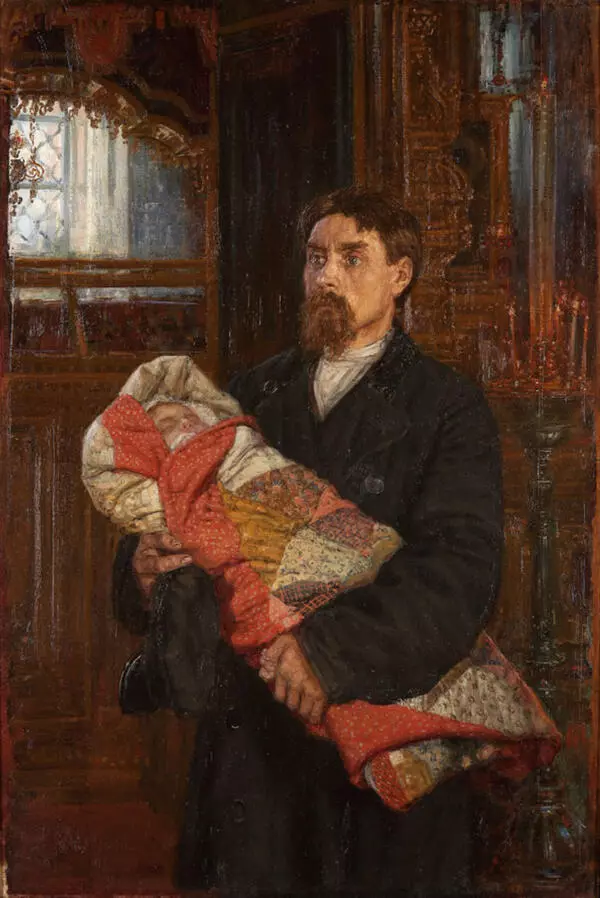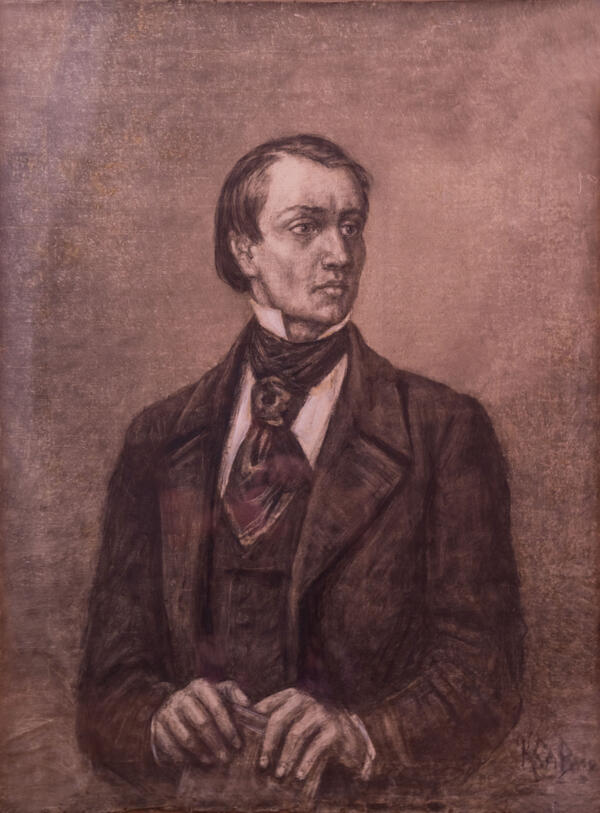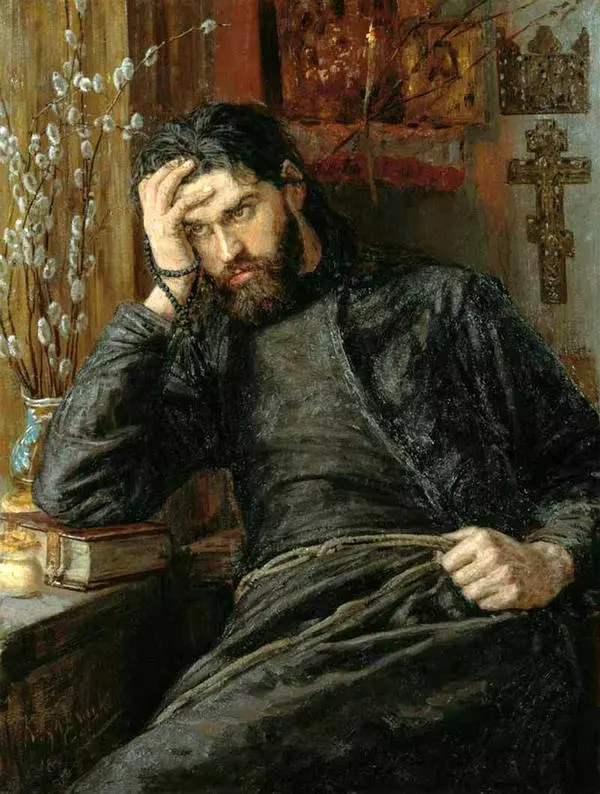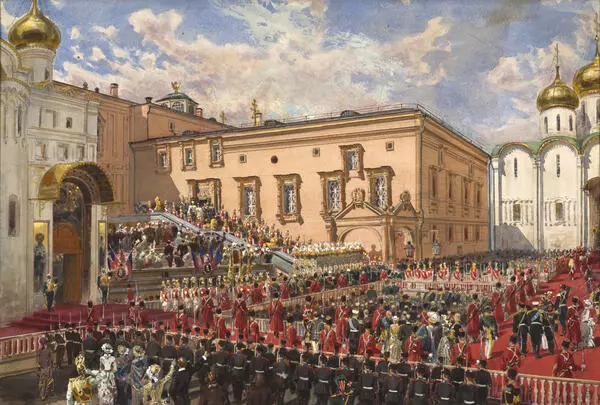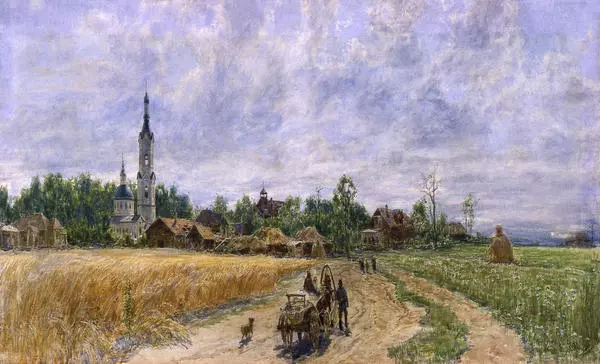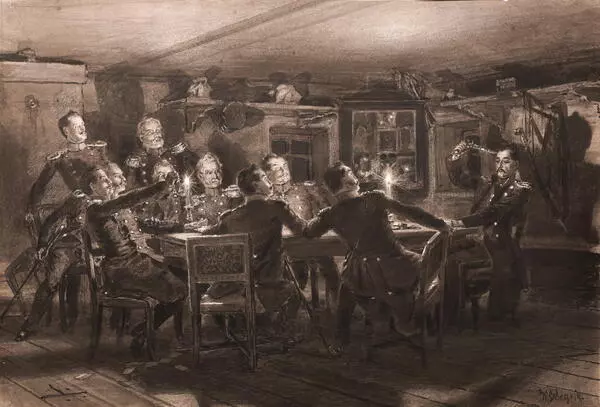Konstantin Apollonovich Savitsky was born into the family of a military doctor in 1844 in Taganrog. He studied at the Taganrog Gymnasium for Boys, after that he entered a private boarding school at the Livonian noble gymnasium. At the age of 22, Konstantin Savitsky was admitted to the class of historical painting at the Imperial Academy of Arts.
Among Savitsky’s teachers were professors Fyodor Antonovich Bruni, Alexey Tarasovich Markov, and Pavel Petrovich Chistyakov. During his studies at the Academy, Savitsky was awarded seven medals.
In 1868, he received three second-rank silver medals for the painting “The Organ Grinder”, in 1869 — a first-rank silver medal for the sketch “The Crucifixion of Christ”, in 1870 — a first-rank silver medal, and a first-rank medal of encouragement for the paintings “Visiting the Sick Son” and “A Watchman at the Gunpowder Cellar”. In 1871, Savitsky received a first-rank gold medal for his graduation work called “Cain and Abel”, after that he was granted a scholarship received from Emperor Alexander II to study abroad.
After visiting the art academies in Dresden and Düsseldorf, Konstantin Savitsky lived and worked in Paris; he took a liking to metal engraving. In 1878, he participated in the Paris World’s Fair, and in 1882 he took part in the All-Russian Industrial and Art Exhibition in Moscow.
The composition of the drawing “Taman”, finished in 1891, represents a scene of a struggle between Undine and Grigory Pechorin amid stormy sea waves. The boat is depicted near the lower edge of the sheet and is tilted to the right side, with water overflowing it.
The young woman is portrayed at a complex angle: her shoulders, head, and arms are turned toward Pechorin away from the viewer. The illustration captures one of the most intense moments of the fight: the protagonist’s handgun falls overboard. In the background are ships anchored at the roadstead. The artist put his signature in the lower-right corner.
Mikhail Lermontov described this episode in A Hero of Our Time as follows:
Among Savitsky’s teachers were professors Fyodor Antonovich Bruni, Alexey Tarasovich Markov, and Pavel Petrovich Chistyakov. During his studies at the Academy, Savitsky was awarded seven medals.
In 1868, he received three second-rank silver medals for the painting “The Organ Grinder”, in 1869 — a first-rank silver medal for the sketch “The Crucifixion of Christ”, in 1870 — a first-rank silver medal, and a first-rank medal of encouragement for the paintings “Visiting the Sick Son” and “A Watchman at the Gunpowder Cellar”. In 1871, Savitsky received a first-rank gold medal for his graduation work called “Cain and Abel”, after that he was granted a scholarship received from Emperor Alexander II to study abroad.
After visiting the art academies in Dresden and Düsseldorf, Konstantin Savitsky lived and worked in Paris; he took a liking to metal engraving. In 1878, he participated in the Paris World’s Fair, and in 1882 he took part in the All-Russian Industrial and Art Exhibition in Moscow.
The composition of the drawing “Taman”, finished in 1891, represents a scene of a struggle between Undine and Grigory Pechorin amid stormy sea waves. The boat is depicted near the lower edge of the sheet and is tilted to the right side, with water overflowing it.
The young woman is portrayed at a complex angle: her shoulders, head, and arms are turned toward Pechorin away from the viewer. The illustration captures one of the most intense moments of the fight: the protagonist’s handgun falls overboard. In the background are ships anchored at the roadstead. The artist put his signature in the lower-right corner.
Mikhail Lermontov described this episode in A Hero of Our Time as follows:



